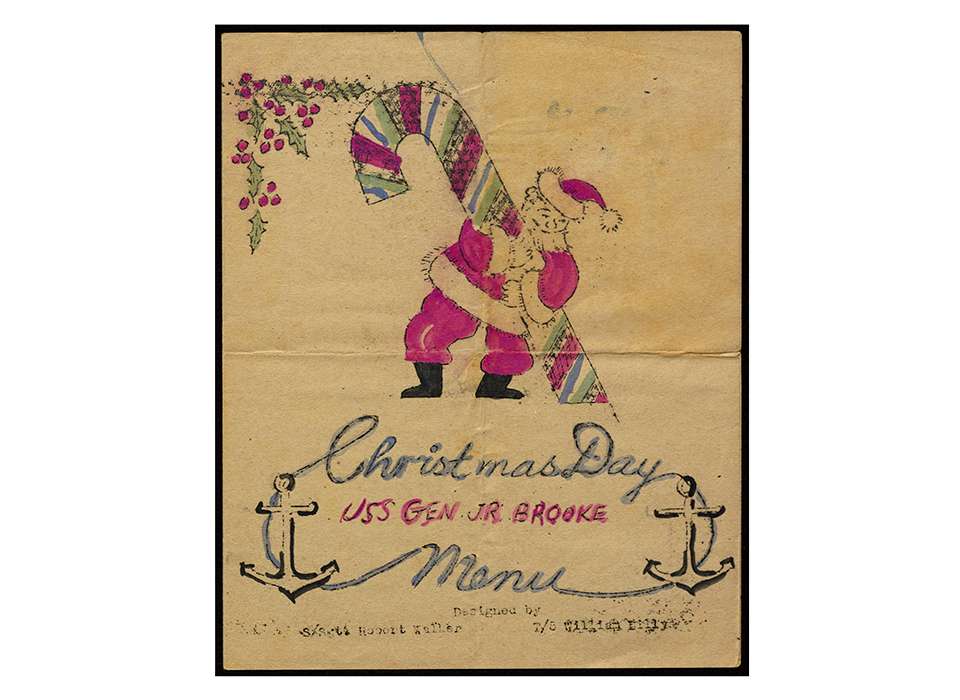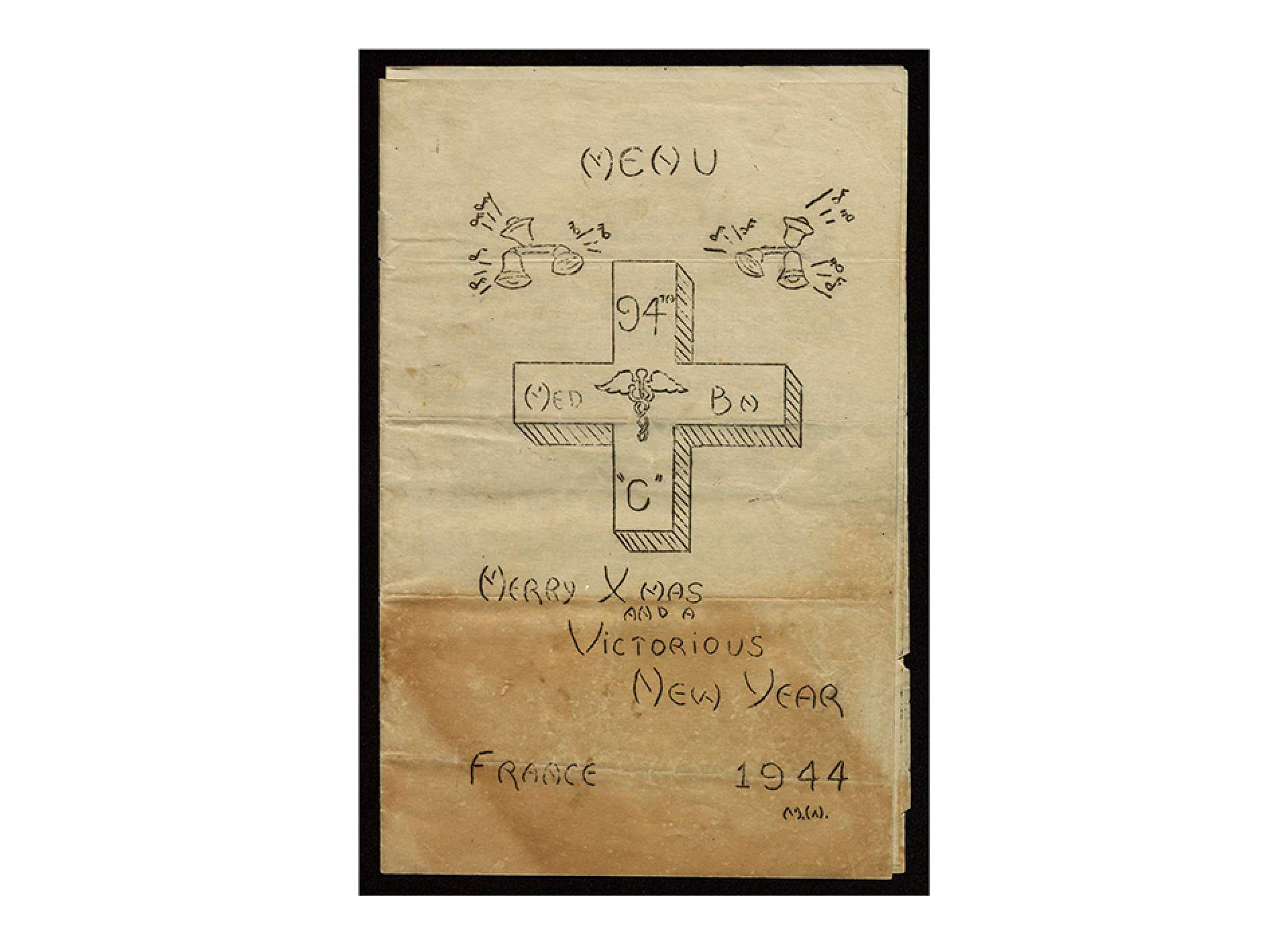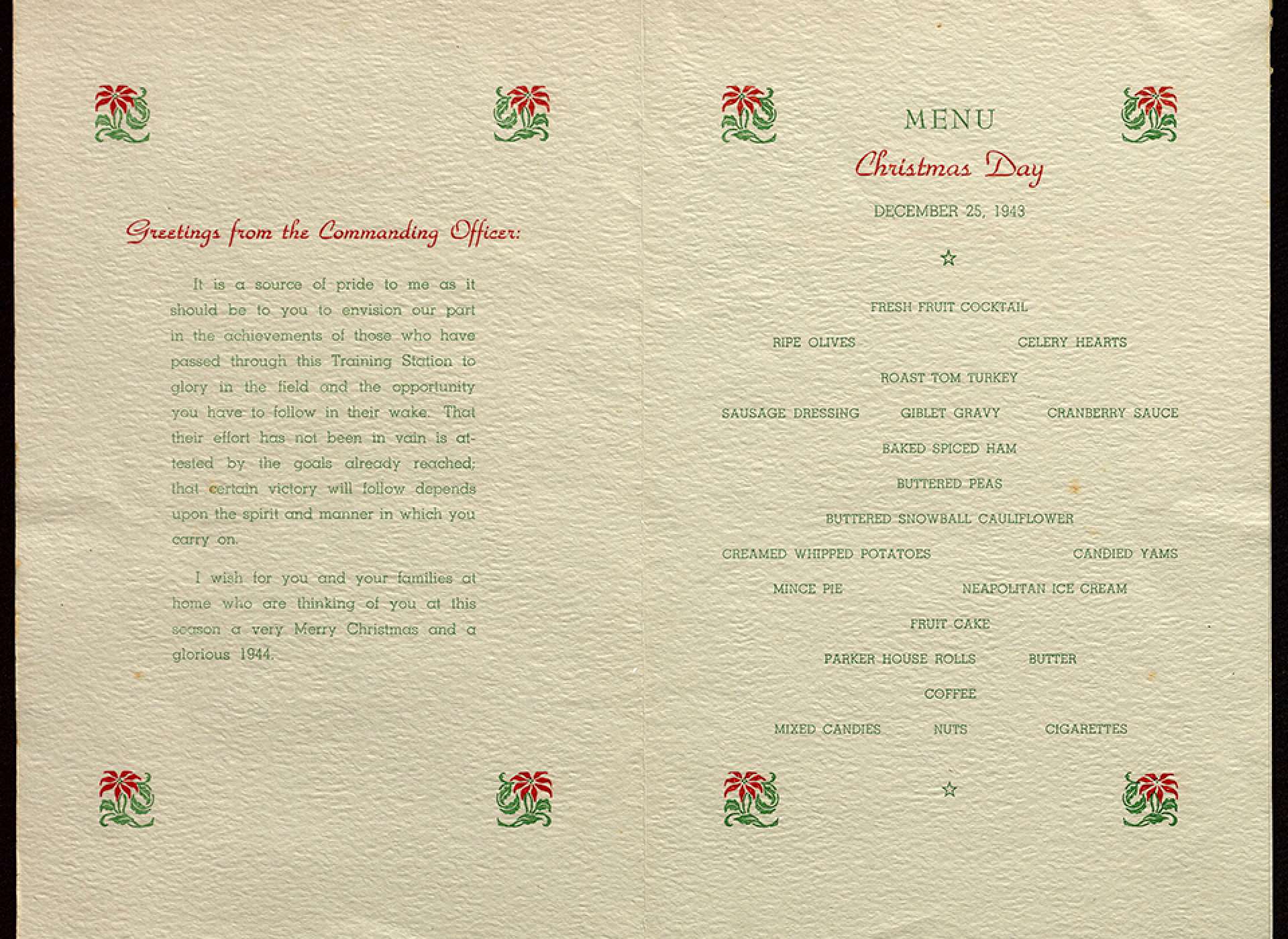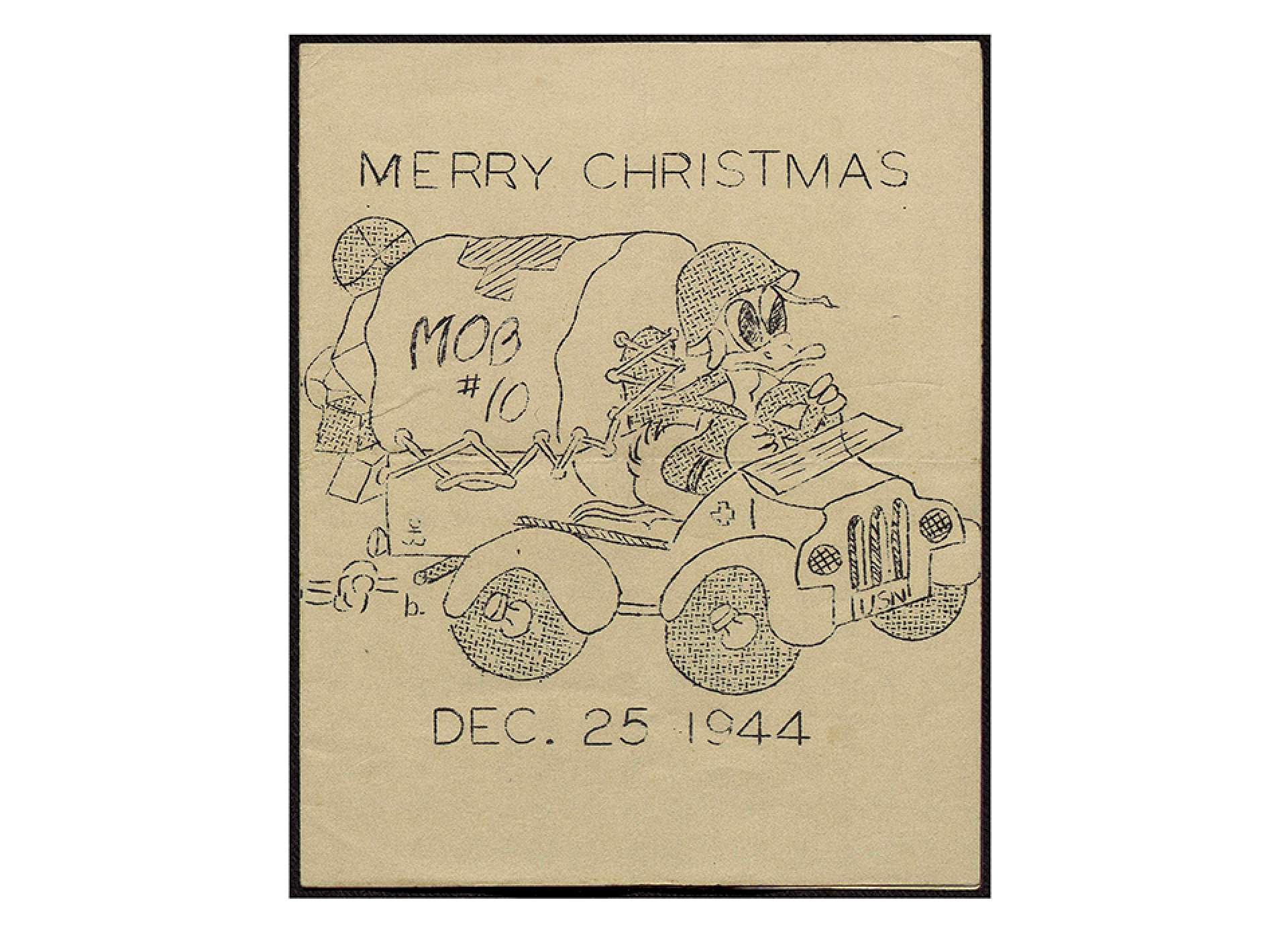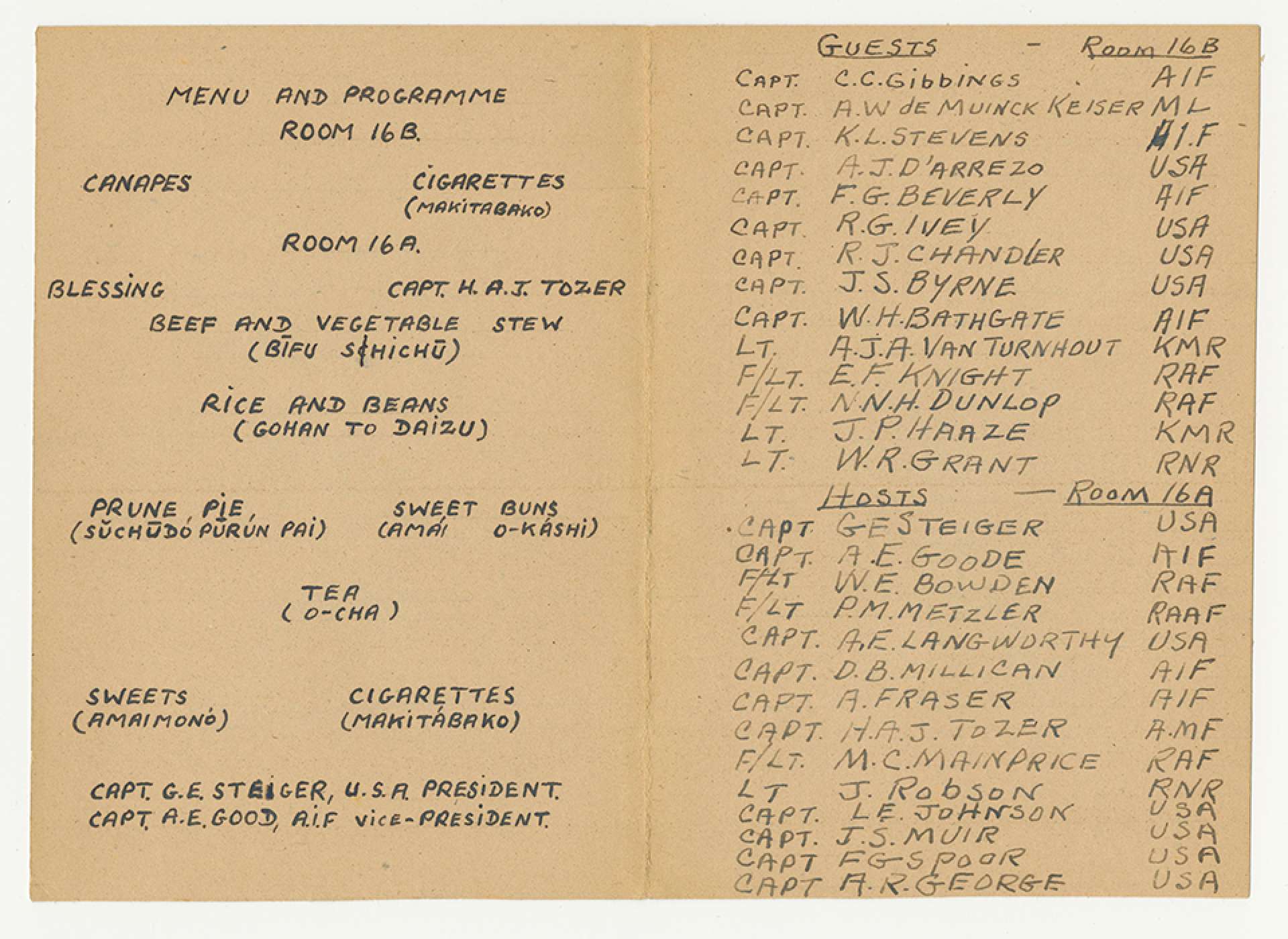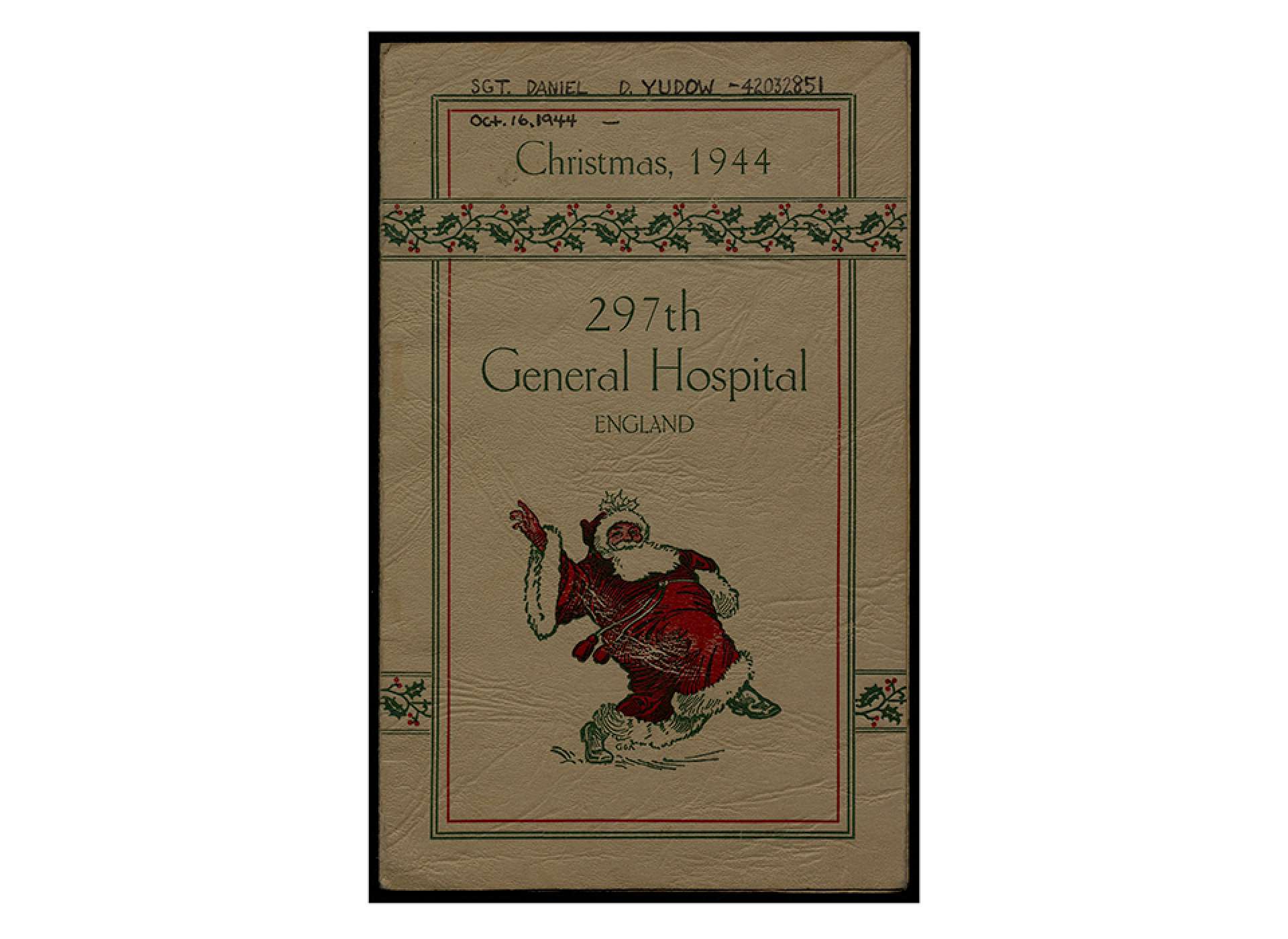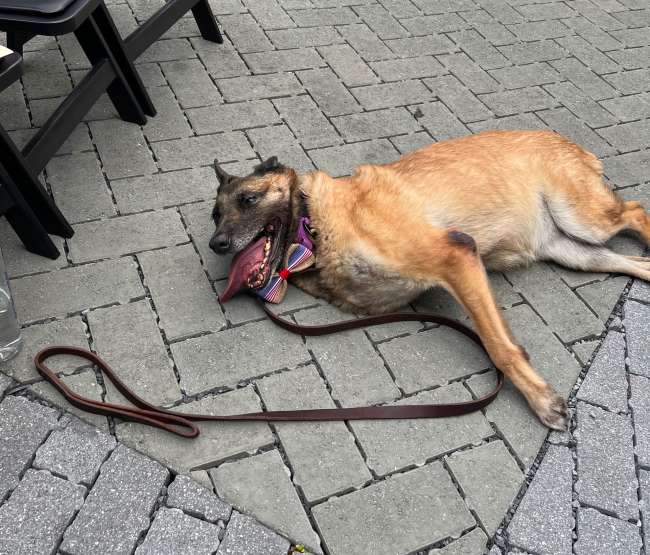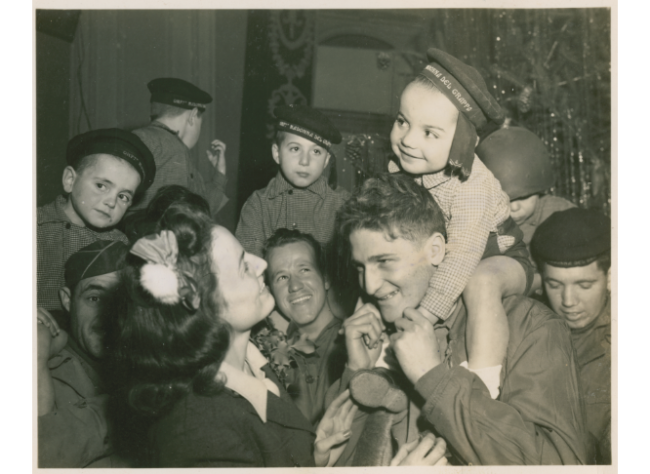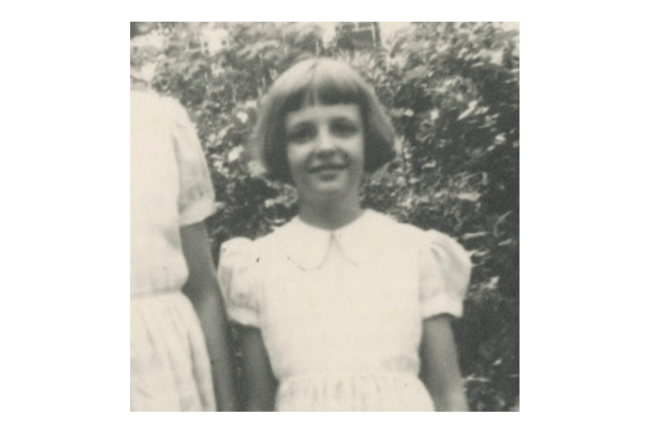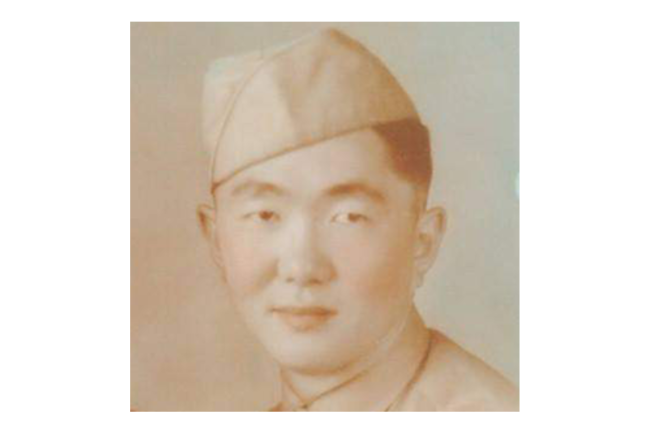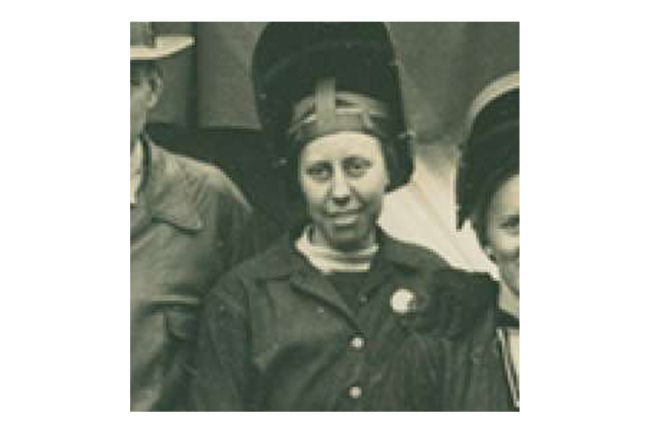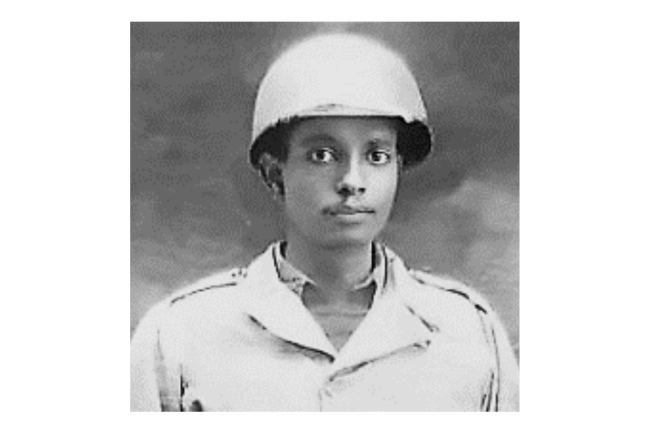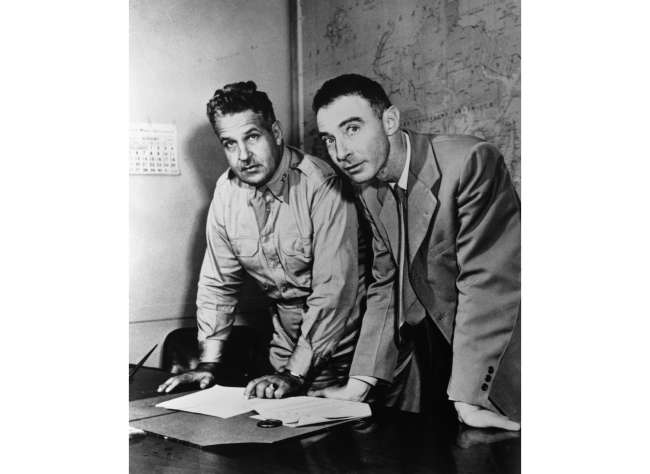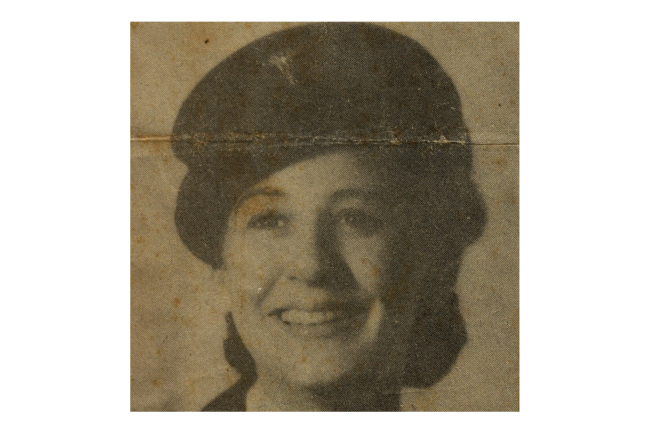The Museum’s collection contains hundreds of menus from meals shared while in service, many of them from Christmas feasts. The fact that so many of these were saved and mailed or brought home tells us just how important these holiday meals were. Holiday gatherings fostered a sense of unity between troops and lessened the loneliness and homesickness that many felt all of the time, but most keenly during the holidays. The special meals prepared for Thanksgiving Day, Christmas and New Year’s Day were undeniably important morale boosters.
Supply for these meals was certainly an issue. In order to feed the US Army, Quartermaster units were mobilized, including QM baking companies and QM refrigeration companies. Refrigerated vans were utilized to prevent spoilage. Sacrifices had to be made in the weeks prior to the holidays to prepare for upcoming feasts. Meals before the holidays generally contained less meat; in fact the recommendation was to decrease meat servings from twelve to seven per week in order to accommodate for the supply of meat for holiday meals and the extra refrigeration space to keep it fresh. An Army couldn’t function with food poisoning.
On ships and on shore, Navy commissary and galley chiefs, stewards and mess attendants worked overtime to provide special holiday meals. They worked from supplies from storerooms, local stocks, and from “reefers,” refrigerated ships, some of which had been requisitioned from the United Fruit Company by the US Maritime Commission.
Holiday menus were printed on bases, in hospitals, or aboard ship. The wartime holiday menus are often illustrated with patriotic, sentimental, or humorous themes. Usually the commanding officers of the outfits are listed on the menus, but sometimes the cooks, butchers, and bakers make an appearance as well. Some menus did double-duty as rosters, These were printed as souvenirs and some featured a space for autographs, where shipmates and friends could sign for posterity. Some of these were printed with space reserved on the back for stamps and addresses, able to be mailed in themselves. There were often messages from commanders. Many echoed the sentiment of Col. Francis Pruitt, Commanding Officer of the 297th General Hospital, who said in his greeting in the Christmas 1944 menu “It is hoped that the coming year will be a Happy and Victorious one, restoring Peace on Earth and Good Will to All.”
-

1944 Christmas Menu from the 94th Medical Gas Treatment Battalion. Gift of Bettye Richard, 2010.349.001
-

1943 Christmas Menu from the US Naval Training Station, San Diego. Gift of Suzanne Davis Gillespie, 2008.215.010
-

Menu from Mobile Hospital #10. Gift of Mary H. Barkei, 2000.185.008
-

1943 Christmas Card from American POW Robert Chandler while in Zentsuji POW camp. Gift in Memory of Robert and Noreen Chandler, 2019
-

1944 Christmas Menu from the 297th General Hospital in England. Gift in Memory of Daniel David Yudow, 2005.070.002
There is some variety in the gastronomy of the menus, although the underlying profile is similar, mimicking standard Christmas menus at home. No matter the locale, holiday menus featured numerous courses. Sauces and salad dressings are listed out separately. Fruits and juices may get their own category. Olives, pickles, radishes and celery are also often afforded a course. Most of the menus close with cigars and cigarettes. In between there are turkeys, dressings, snowflake potatoes. Sometimes regional dishes make an appearance like “Turkey Gumbo Soup” at the Naval Air Station in Hawaii.
There are some rare and unusual menus. Even these draw from familiar traditions and how one might recreate them in even the most trying of circumstances. Special hand-printed and illustrated menus were created in camps by Americans held as prisoners of war in Europe and in the Pacific. It is hard to imagine a festive atmosphere in a Japanese POW camp, but those in captivity did their best to hold on to the remembrances of home during wartime holidays. Even in desperate places, each holiday came with the hope that the next holiday could be spent in freedom with loved ones; that the next holiday meal would be at the family table.
Kim Guise
Kimberly Guise holds a BA in German and Judaic Studies from the University of Massachusetts Amherst. She also studied at the Universität Freiburg in Germany and holds a masters in Library and Information Science (MLIS) from Louisiana State University. Kim is fluent in German, reads Yiddish, and specializes in the American prisoner-of-war experience in World War II.
Cite this article:
MLA Citation:
APA Citation:
Chicago Style Citation:
